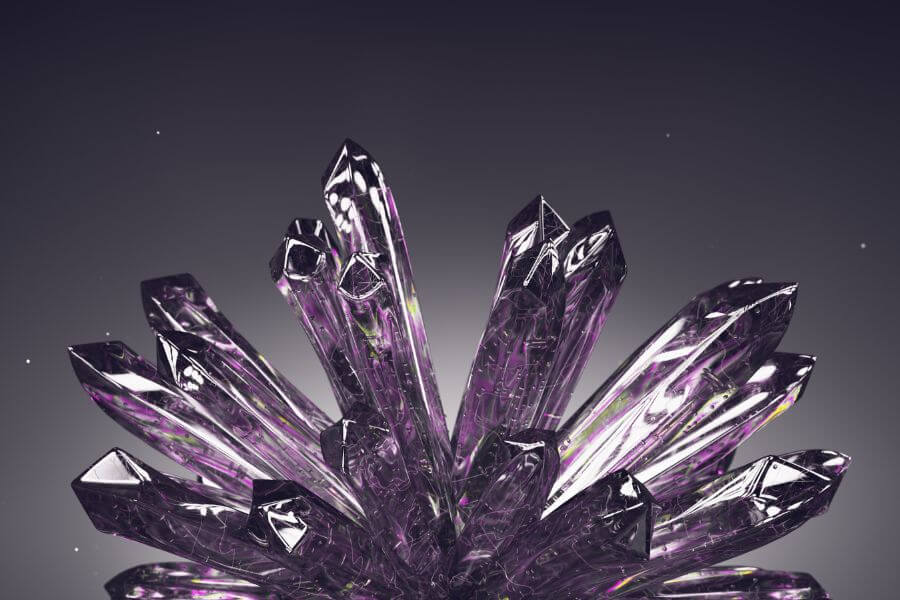Nature is full of beautiful bounties that include rocks, crystals, and other minerals. Humans share a very deep and ancient relation with crystals. However, these sparkling, shining rocks, along with their healing properties, have many industrial properties. In fact, these qualities combine to make them one of the most prized possessions of the modern-day industrial and technological world. To that end, this post is about some of the ways our industrial society benefits from crystal electricity.
Of course, different crystals have different properties. Interestingly, the family of quartz possesses a rare property of converting mechanical pressure into electrical energy. Not only this, but these crystals also convert electrical energy into mechanical vibrations. This is the basic working concept of earphones and ultrasonic radiators. This entire mechanism is known as the ‘Piezoelectric effect’. #Fascinating!
If this is something that interests you, I invite you to continue reading to learn more fascinating facts about crystal electricity.
Interesting Facts About Crystal Electricity – the Sparkle that Ignites!
Crystal Electricity: Pyroelectricity Crystals

Pyroelectricity is the ability of certain materials to generate a temporary charge when heated or cooled. This type of crystal changes internal polarity with temperature which allows the crystal to retain an electronic charge. There are a lot of pyroelectric materials in existence. For example, one pyroelectric mineral is tourmaline. Tourmaline is a semi-precious gemstone. It exists in a multitude of colors. The pyroelectricity effect was first observed in tourmaline and quartz minerals. This effect is observable in many other types of materials. Triglycine sulfate is a pyroelectric chemical. Lead zirconate titanate is a pyroelectric ceramic. There are also biological materials such as collagen that are pyroelectric. All these materials temporarily retain a small electric charge with temperature.
Things You Need to Know About Crystal Electricity Share on XPyroelectricity Crystals are unique among other crystals because of their symmetry. When you heat the opposing faces of tourmaline or quartz, they develop electric charges. Accordingly, the term pyroelectricity applies to this technique. Interestingly, to determine the temperature change when electrical charges separate in crystalline material, scientists use a pyroelectric thermometer to measure the crystal electricity.
A pyroelectric thermometer is a thermal detector that detects heat. It uses infrared technology to read the temperature within an object. A pyroelectric thermometer can read energy variations within a crystal. It can even detect whether a crystal was recently handled. Scientists say that a pyroelectric crystal can receive a charge from the heat of a human being or animal from several feet away.
Crystal Electricity: Piezoelectric Effect

Have you ever turned on a gas stove with an automatic lighter? Or perhaps you’ve operated a propane grill igniter. If so, then you’ve seen the Piezoelectric Effect in action. The piezoelectricity effect is the ability of materials to generate an electric charge when pressed or struck. Those appliances have piezoelectric crystals inside. When you activate the “on” switch, a mechanism strikes the crystal producing an electric spark. The spark is used to ignite the fuel.
Interestingly, the piezoelectric effect derives from the Greek word, piezo. The word piezo means “to press.” The “pressing” happens when the quartz crystal is put under pressure which temporarily deforms the lattice structure. As a result, the positive ions move to one side and negative ions move to the other. Doing so creates a strong and different opposite charge.
The Piezoelectric effect was first recorded in the late 19th century by French scientists Pier Curie and Jacques Curie. They demonstrated the effect using Quartz and Rochelle salt. Other piezoelectric materials include Topez, Tourmaline, Salt, and Cane Sugar.
How to Demonstrate Piezoelectricity Take two quartz crystals (right) with no termination and at least one flat, unpolished, side. Two nuggets of rose quartz are ideal. In a dark room, rub or bang the two flat sides of the crystals together. Friction causes the quartz to light up. Do not attempt this with prized crystals or those with flaws.
The Book of Crystal Healing by Liz Simpson
The piezoelectric property of quartz is very beneficial for industries. However, pure quartz in its natural form is rare. That’s why to generate the piezoelectric effect and to leverage its benefits, laboratories produce such crystals artificially. Piezoelectricity is a valuable property and since its discovery, this form of crystal electricity has been in use in many beneficial ways.
Nanotechnology
Earlier, when scientists discussed crystals, their discussions focused on the crystal structure and its properties. But not anymore! With advancements in technology, these properties change by working and tweaking the lattice structure of crystals. In addition, the technology behind this is ‘nanotechnology’ and this is slowly becoming the most widespread technology in use.
The whole technology is about the accurate placement of every single atom to augment manufacturing. This previously was impossible. Nanotechnology is relatively new with the conception taking place in 1959 when American physicist Richard Feynman envisioned rearranging objects atom by atom. However, this technology isn’t just about developing smaller objects but extending the accurate molecular structure control to the big objects.
Advancements in Nanotechnology are responsible for many revolutionary products. For instance, a coating now exists that is 100-percent water and oil repellent. This revolutionary product helps waterproof clothing and construction gear. Its also used on concrete buildings to make them resistant to graffiti. Another fascinating product is “Spray-On” clothing. I don’t mean a coating that you spray onto clothing. I mean literal “Spray-On”! Scientists developed new material using nanotechnology that you spray. It makes a shirt in a matter of minutes by spraying it onto a mannequin. This technology may be the future of clothing as we know it!
For this purpose, there is a need for highly advanced computer-aided designs or CAD. With such tools, crystalline material and even diamonds, are susceptible to manipulation. Of course, diamond is the hardest substance we know, which is way lighter than steel or iron. In fact, scientists are working their way toward developing aircraft from diamond-like material. The implications are an aircraft that is one-hundredth the weight of present aircraft but ten thousand times in strength.
Goals of Crystal Electricity and Nanotechnology
One of the key goals of nanotechnology is to transform the manufacturing sector by reducing costs. Thankfully, this technology has the essential capabilities to manipulate the atomic structures of crystals. By using computer-generated ‘selection lattices’, the operator easily edits either an individual atom or a group of atoms to change or enhance the overall structure of the crystal. Using nanotechnology, durable equipment is faster and cheaper to build.
Scientists agree that Crystal Electricity and Nanotechnology are both still at their “infant” stage. The manufacturing sector is already benefiting from the technology. However, imagine if crystal electricity and nanotechnology were able to destroy cancer cells in a human body. We don’t yet know the full potential of this technology. There is still so much more to discover. Nevertheless, we know for sure that this technology is going to be a game-changer in the era that is soon to come. It’s the future era we call the ‘Diamond Age’.
Books of Interest



Conclusion
It is my hope that you find this post enlightening and helpful. If you have any questions or suggestions, we love to hear from you in the comments below. Also, kindly accept our invitation to join our group on Facebook to surround yourself with kindred spirits and post your encouraging messages.











































